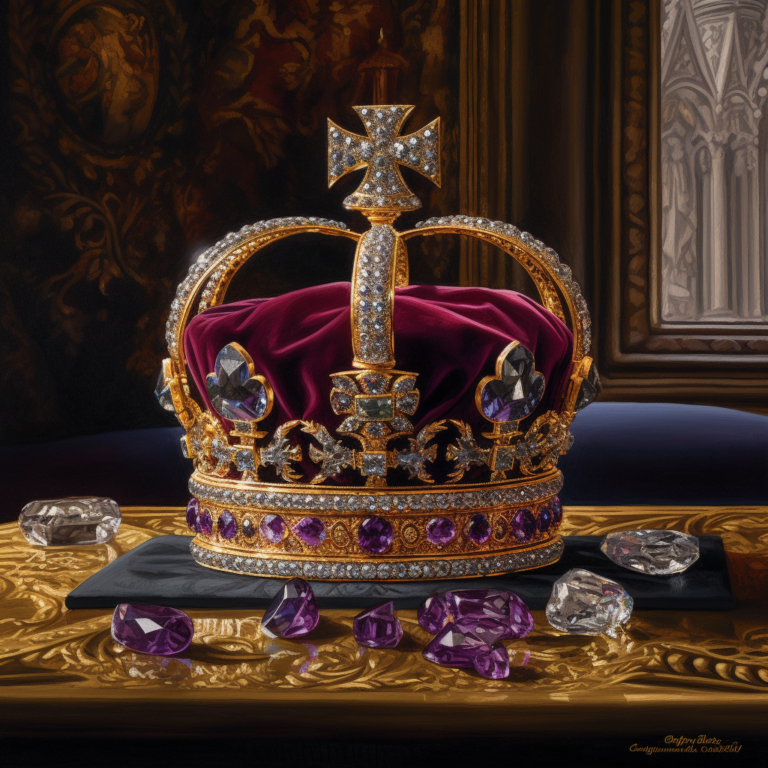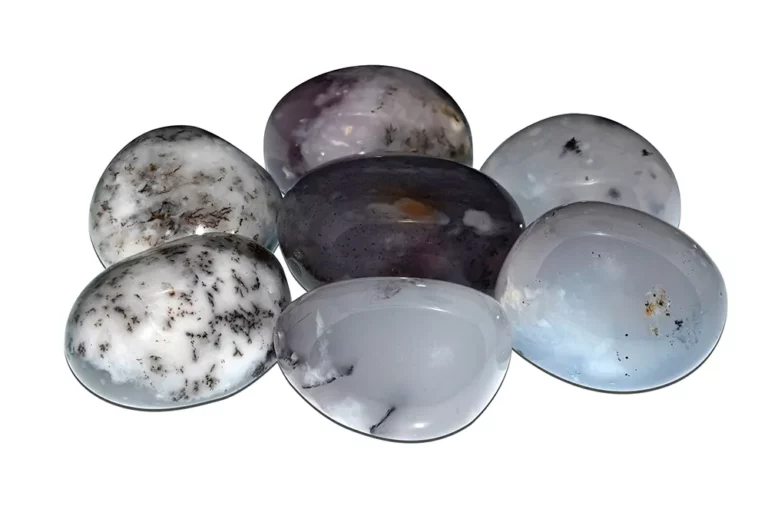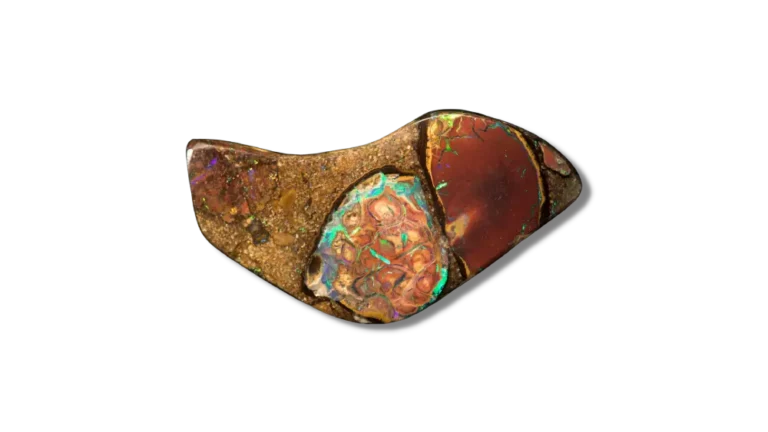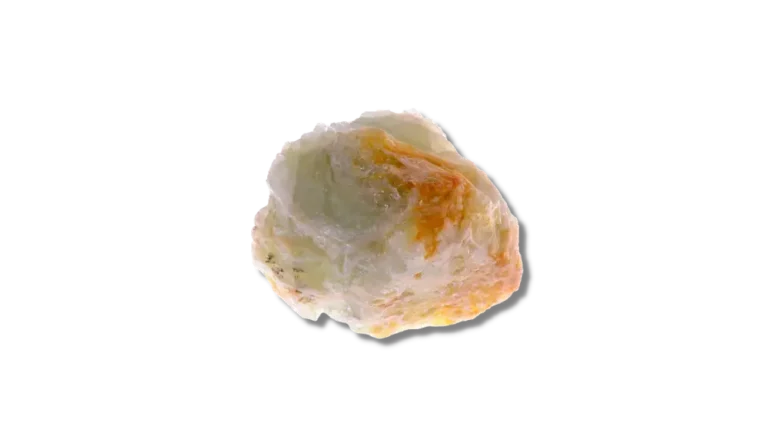Pearl: Properties, Benefits & Meanings
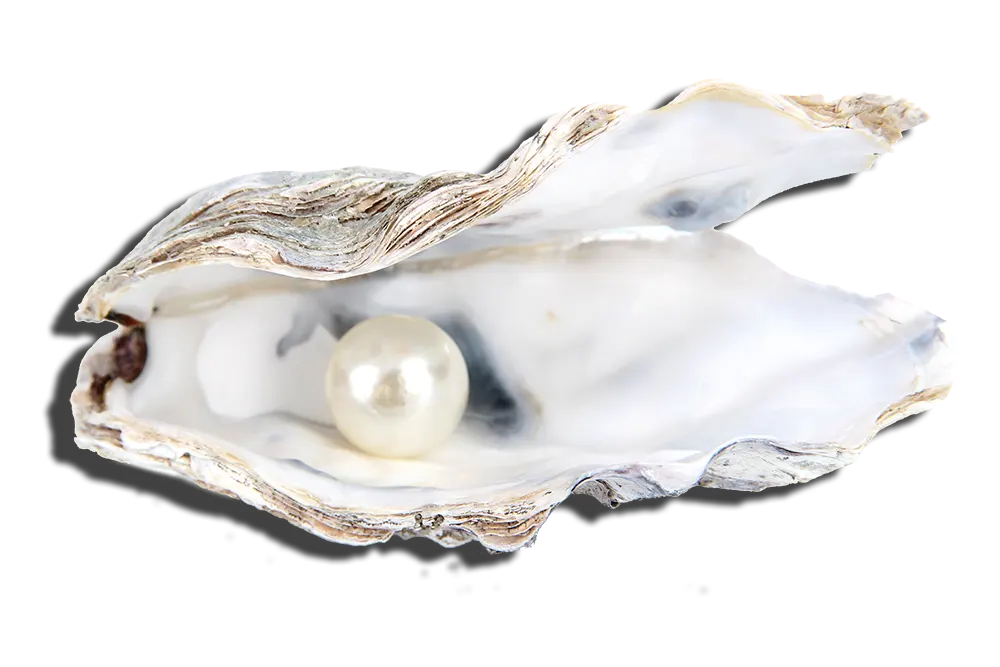
Pearl Overview
Pearls are small, hard, round, shiny crystals formed inside oysters and other mollusks. These alluring gemstones have been treasured for their beauty and rarity for centuries. They symbolize elegance and sophistication and are often used in high-end jewelry pieces. The natural creation process and their unique properties make them highly sought-after gems.
Pearls have been treasured since ancient times due to their natural iridescent sheen and pale pinkish color. This article will explore the Pearl gemstone’s properties, meanings, and uses.
What Is Pearl?
Pearls are lustrous and beautiful gemstones with unique and beautiful colors. They are commonly used in jewelry, decorative objects, and high-quality fabrics. They are also used in cosmetics, food products, and pharmaceuticals for their powerful antioxidants and other medicinal properties.
It is an organic gemstone that forms from the inside of certain species of oysters and other marine animals. It consists of layers of concentric growth rings like those of a tree. These layers are composed of several types of minerals. The color is due to the presence of these minerals in different concentrations, which give each layer a unique hue. The mineralogical composition can be different between species or individual oysters. As such, it isn’t easy to standardize the quality of pearls, though there are some recognized grades (for example, AAA+ or AA+).
Etymology
The etymology of the word “pearl” is interesting, as it reveals the rich history of this precious gemstone. It comes from the Anglo-Saxon “pæril,” which means “to pour.” In ancient times, pearls were often used as a currency and believed to have medicinal properties. They were even said to be able to cure ailments like gout and rheumatism.
How is Pearl Formed?
Pearls are formed when a mollusk, like an oyster, clam, or mussel, produces a layer of nacre to cover an irritant inside its shell. The irritant is typically a parasite, foreign material, or some form of calcium carbonate, such as sand. As more and more layers of nacre are deposited, the foreign object becomes coated in a smooth and lustrous form. The result is an organic gem composed of mother-of-pearl layers of calcite and aragonite crystals.
Depending on the species and environment in which it lives, the length of time it takes to form will vary. Generally, though, it take at least two to three years to harvest. Natural pearls are the rarest and most valuable kind. They form spontaneously in their natural surroundings, but only occasionally.
Freshwater and Saltwater pearls are cultivated in farms and make up most of those sold today. Imitation pearls can also be found in inexpensive jewelry.
Pearl Appearance
Luster is determined by the number and thickness of its layers. Iridescence—the play of colors we see is caused by light bouncing off overlapping layers.
The most common type of pearl is baroque, which has a spherical shape. Other shapes include drop and teardrop. The gemstones can also be classified by their color: white, cream, gold, or silver. The most valuable are black and Tahitian pearls. In addition, these gems can be dyed yellow, green, blue, brown, pink, purple, or black.
Where Can You Find Pearls?
Below are some countries where pearls are found:

Physical Properties
| Mineral Group | Calcite |
| Crystal System | Orthorhombic |
| Color | White, Pink |
| Hardness (Mohs scale) | 2.5 – 4.5 |
| Refractive Index | 1.627 – 1.639 |
| Fracture | Uneven |
| Luster | Vitreous |
| Specific Gravity | 2.60 – 2.85 |
| Transparency | Translucent, Opaque |

How To Tell If A Pearl Is Real?
The best way to tell if a pearl gemstone is real is to have it tested by a professional jeweler. You can also use some of these tests at home:
- Acetone test: Put a few drops of acetone on it, and it should turn cloudy. If it’s real, this won’t happen. The surface of the sampleshould also be smooth.
- Check for Inclusions: The gemstone surfaces are smooth and lustrous. Check for cracks on the surface of your stone. There are several ways to repair small cracks, but large ones can often damage the gem beyond repair—and may drastically reduce the value of your stone. Although small cracks in a pearl may not cause it to lose much of its value, you should avoid purchasing any pearls with visible imperfections.
- Color Consistency: The gem should have a consistent color. If you can see a difference between the center and edge of your pearl, it’s likely to be fake. A fine-quality pearl will be consistent in color. Looking closely at a pearl and seeing its various shades could indicate that the stone has been dyed or bleached. A natural pearl’s surface should also be shiny and lustrous.
When buying, ensure your seller has a good reputation and will give you your money back if the stone differs from what was advertised.
Natural vs. Cultured Pearls
Pearls can be divided into two main categories: natural and cultured. Natural pearls are formed inside the shells of mollusks completely by chance, without any human intervention. Therefore, they are extremely rare and valuable, as their formation is rare. In contrast, cultured pearls are made by intentionally introducing a small irritant into the mollusk, which triggers the formation process.
Cultured pearls are further classified into different types based on the type of mollusk used and the cultivation method. Freshwater is grown in Freshwater mollusks and can be found in various shapes and colors. A specific kind of saltwater mollusk produces Akoya pearls. They are known for their perfectly round shape and high luster. South Sea pearls are the largest and rarest type grown in the warm waters of the South Pacific.
While natural ones are highly coveted due to their rarity and uniqueness, the vast majority available in the market today are cultured. It is because naturals are extremely rare and difficult to find, and the process of producing cultured has been refined and perfected over the years. Despite this, natural pearls still hold a special place in the world of gemstones.
Four Major Types of Cultured Pearls
The four major cultured pearls are Akoya, Freshwater, Tahitian, and South Sea.
- Akoya pearls are traditionally known for their high luster, perfectly round shape, and white-to-cream body color. They are produced in Japan and China and are typically smaller than other cultured types, ranging from 2 mm to 11 mm. These are often used in classic and elegant jewelry, such as necklaces and earrings.
- Freshwater pearls are grown in Freshwater mollusks and are produced mainly in China. They come in various colors, including white, pink, lavender, and peach, and are usually baroque or oval. Freshwater are generally more affordable than other cultured ones and are commonly used in fashionable jewelry pieces.
- Tahitian pearls are grown in black-lipped oysters in French Polynesia and are known for their unique dark body colors, which range from dark green to gray to black. They are also larger than Akoya, typically round or semi-round in shape. Tahitian are considered some of the most exotic and valuable in the world and are often used in high-end jewelry pieces.
- South Sea pearls are the largest and rarest type produced in the warm waters of Australia, Indonesia, and the Philippines. They come in various colors, including white, gold, and champagne, and are typically round or baroque in shape. South Sea are highly valued for their rarity, size, and luster and are often used in luxurious and elegant jewelry pieces.
Pearl Value and Quality Factors
Pearls value is determined by seven factors: size, shape, color, luster, surface quality, nacre quality, and matching. The last factor is especially important for jewelry sets with two or more pieces.
Size
The size can greatly impact its value, with larger pieces generally being more valuable than smaller ones. The size is measured in millimeters and can range from as small as 1 mm to as large as 20 mm or more.
Shape
Pearls come in various shapes, with round being the most highly valued due to their rarity and symmetry. However, other shapes, such as oval, drop, or baroque, are popular and can create unique and interesting jewelry designs.
Color
They come in many colors: white, cream, pink, silver, and black. However, the most valuable and highly prized colors are typically natural and rare.
Luster
The luster is the brightness and reflectivity of its surface. Therefore, high-quality should have a bright, mirror-like shine that reflects light evenly across the surface.
Surface quality
The surface should be free of blemishes, cracks, and other imperfections. The fewer blemishes a piece has, the higher its quality and value.
Nacre quality
The thickness and quality of the nacre layer can greatly impact its durability and longevity. Gemstones with a thick, high-quality nacre layer are more valuable and durable than those with thin or poor-quality nacre.
Matching
When purchasing a set, it’s important to ensure they are well-matched in size, shape, color, luster, and surface quality. A set that are perfectly matched will be more valuable and visually appealing than a set with noticeable variations between the pieces.
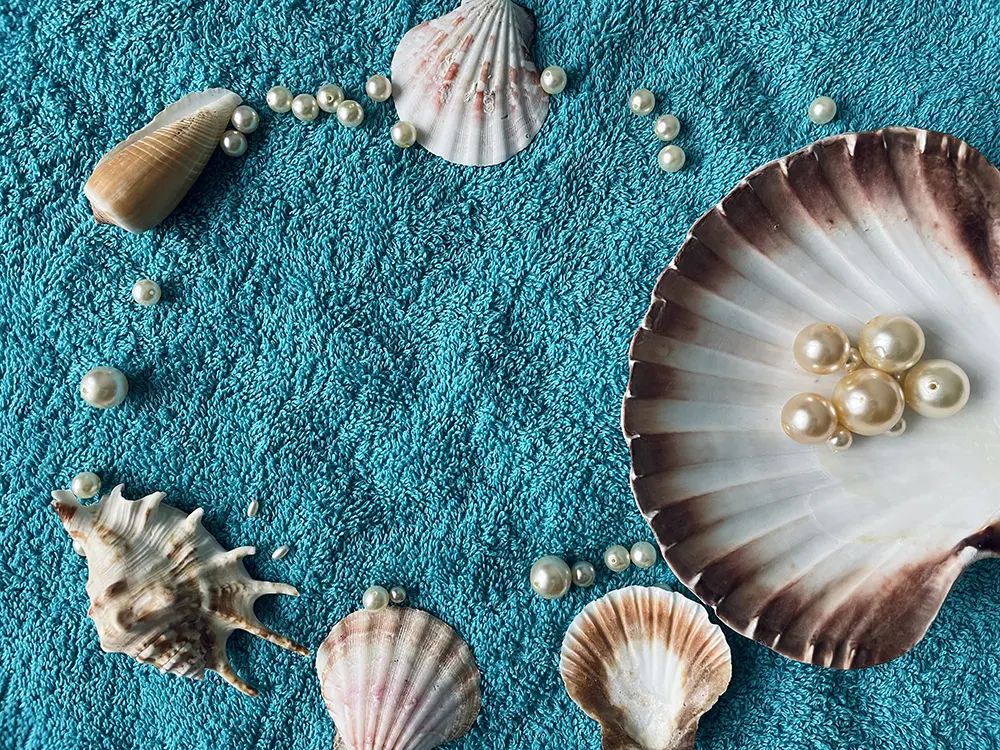
Pearl Chakra Connection
The color and aura of these gemstones resonate heavily with the Third Eye Chakra, also known as Ajna. This Chakra is in the middle of the forehead and is responsible for intuition, imagination, and thought processes. It also regulates our psychic abilities. The Third Eye Chakra is associated with a person’s spiritual growth and development.
Blockage of the Third Eye Chakra is not beneficial because it impedes our spiritual growth and development. It can lead to a dull mind and depression.
It is believed that when this Chakra is open and balanced, it allows people to see things beyond what they can physically perceive with their five senses.
Is Pearl A Birthstone?
Pearl is the traditional birthstone for those born in June, believed to bring fortune and prosperity. Two other birthstones for June are alexandrite and moonstone, offering various colors and prices to fit individuals’ preferences or budgets.
What does Pearl Symbolize?
- Purity: It is a symbol of purity. It’s believed that the gemstone is the purest gem on earth, representing a child’s innocence. In ancient times, they were used to decorate children’s clothing as a way to protect them from evil spirits and bad omens.
- Wisdom: It is a symbol of wisdom. It’s believed that they are like a mirror to the soul, and looking at one can show you your true inner self. It represents all of our experiences throughout life and helps us learn from them so that we can grow stronger and wiser with each experience.
- Prosperity: It is a symbol of prosperity. It represents wealth and abundance and can attract physical and spiritual wealth into our lives. It also represents our desire to succeed and achieve our life goals.
- Love: It is associated with love in many cultures because its spherical shape resembles the heart. It’s believed they can help us find true love by bringing out our best qualities. You can also use this stone to attract the love of your life.
Uses Of Pearls
Pearls have been prized for their natural beauty and rarity for centuries and have been used in various ways throughout history. Here are some of the most common uses:
- Jewelry: They are most commonly used in jewelry, such as necklaces, bracelets, earrings, and rings. They can be worn in formal and casual settings and are often used to add a touch of elegance and sophistication to any outfit.
- Clothing and Accessories: These gemstones can also embellish clothing and accessories, such as handbags, shoes, and hats. They can be sewn onto fabric or used as buttons or fasteners.
- Cosmetics: They have been used in cosmetics for centuries, particularly in traditional Chinese medicine. Powder, made from ground-up pearls, is believed to have various skin benefits, such as improving skin tone and reducing the appearance of fine lines and wrinkles.
- Art: These stones have been used for centuries, often as a symbol of wealth and luxury. They can be used to create intricate designs and patterns or to accent other materials such as wood, metal, or glass.
- Religious and Cultural Significance: They have also played an important role worldwide in various religious and cultural practices. For example, many cultures often use these gems in wedding ceremonies and other celebrations and are seen as a symbol of purity and innocence.
These are versatile gemstones that can be used in various ways and have played an important role in human history and culture for centuries.
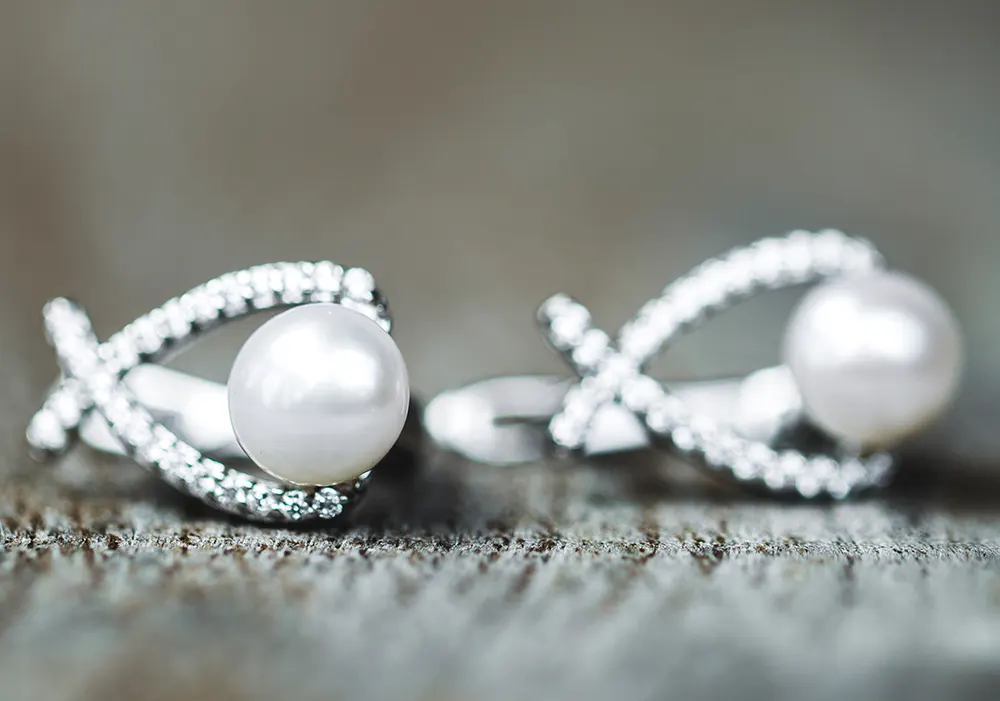
How To Clean Pearl Jewelry?
If you want to clean your Pearl jewelry at home, take the following steps:
- Wipe your jewelry with a cloth and warm water, just as you would for any other piece of jewelry.
- If your jewelry has been worn frequently or is dirty from everyday wear, you can use mild dish soap to clean it. Make sure that the soap does not contain bleach!
- Use a soft cloth dipped in alcohol to clean the gemstone’s surface; this will help keep it looking shiny.
- Cleanse it using burning sage to remove any negativity absorbed, which can negatively impact the surroundings.
- There are various ways to recharge your amulet, including immersing it in moonlight or burying it underground.
FAQ
Which Gemstones Go Best With Pearls?
Both men and women can wear these gems. It goes well with all other gems, especially emeralds, green tourmaline, and Kunzite stones. If you want to match your jewelry with your outfit or occasion, you can also choose from a vast range of colors available in the market.
What Is Pearl Good For?
It is a gemstone that has been used for centuries. It has many benefits, including spiritual, emotional, and physical benefits. It has also been considered to be a good luck symbol and is widely used by people all over the world.
What Are The Healing Properties Of Pearl?
It is a gemstone that has many healing properties. For example, it helps in balancing emotions and bringing peace to mind. It is also thought to be good for meditation, as it helps stimulate the Third Eye Chakra.
Is Pearl Heat Treated?
Yes, They are heat treated to improve their color and luster. It can be done by either soaking the stone in hot water or exposing it to extreme heat in an oven. Heat treatment makes the color of the stone brighter and more uniform. It is also subjected to irradiation in order to prevent bacteria from forming inside it.


